KEY POINTS:
- Share information on freight workings
- Develop the Strategic Freight Network
- Secondary routes
- Relieve burden on HS1
 Read the peer reviews for this feature.
Read the peer reviews for this feature.
Download the graphs for this feature.
To Sir Peter Hendy, chairman of Network Rail:
You have been gifted with an unenviable task, one that follows in the shackled footsteps of Beeching, Serpell and McNulty. So I appreciate the burden of expectation that currently rests on your shoulders - Transport for London must seem a very distant (and relatively pleasant) memory…
Twenty years on from privatisation, the rail freight sector has made significant achievements, growing traffic by almost 70% despite multiple setbacks from within and outside the rail industry.
The Rail Delivery Group estimates that per annum, rail freight generates £1.5 billion in economic benefits, and pays £150 million into Treasury coffers. Trains now carry around a quarter of containers from the ports, support Jaguar Land Rover, Mini and other automotive manufacturers with their exports, and keep the supermarket shelves stacked with products for most of the major retailers.
Rail has also helped keep the lights on, by delivering coal to the power stations, although after decades of service the coal-fired stations are closing and coal volumes by rail are falling.
If rail is to unlock at least some of the massive untapped potential (see the 2013 NR Freight Market Study for some spectacularly bullish forecasts), the train operators will need to be far more innovative and aggressive in their approach. However, no amount of innovation or sales effort will deliver traffic if the rail network can’t carry it in a cost-effective and competitive manner. Hence this letter to you.
Let’s start with a relatively easy one: better information about the freight capabilities of the rail network and what operates over it.
It wasn’t that long ago we were told that opening up the workings of the Working Timetable to the outside world (such that the outside world could then make more use of rail) wasn’t possible for reasons of commercial confidentiality - the outside world might find out how it works!
Thankfully common sense has prevailed, and several startups have produced apps that now tell the rest of us in real time where freight trains are running, although you still have to know where to look.
A Network Rail portal that allows new customers to see who runs what between where (think of a freight version of National Rail Enquiries), along with better interactive mapping of network capabilities (loading gauge, axle loads, trailing weights) would help drive new business onto the railways - and drive out a lot of us rail consultants, which in itself must make it a price worth paying.
Then there’s the tricky subject of physically gaining access to the network. If you want to connect a new freight terminal to the main line, there’s not going to be much change left from £5m. Yes, five million quid! As we’re often told: “It’s not the labour guv, it’s the signalling.”
This can be a big deterrent to plugging new sources of freight traffic into the network. Hence it would be useful to look at the make-up of these costs and (as with the rest of the network’s cost base) how this could be reduced.
If not, could there be other development models worth exploring, such as NR taking the capital investment hit in return for a long-term agreement with the end user through a lease or Connection Agreement? After all, NR is otherwise asking third parties to invest considerable sums upfront in someone else’s infrastructure, with no long-term guarantee as to how that investment might be realised or protected.
Talking of access, and mindful of the ever-expanding ‘click and collect’ market, NR is in the enviable position of having 2,533 key locations in and around towns and cities where freight could be dropped off and collected - otherwise known as passenger stations.
While Doddle is taking care of things on the stations themselves, a small startup called 5PL Ltd (I declare an interest here) is now moving parcels again on passenger trains (think Red Star for the 21st century), starting with those nice people at East Midlands Trains.
Key to allowing 5PL and other providers to expand such services will be securing the remaining stations where small delivery vans can get close to (or in some cases alongside) the trains, to effect a smooth transfer of high-value, time-sensitive freight.
Trials into Euston over the past couple of years show what can be achieved when common sense prevails over the ‘elf & safety brigade, as you yourself demonstrated with the Tube in recent years - I’d love to have seen the look on some people’s faces when someone suggested allowing antique mobile coal-fired high-pressure boilers (steam locomotives) to run into London and penetrate the depths of the capital’s underground rail network. Our experience in trying to get freight back into central London has involved similar levels of disbelief and abject horror from some quarters.
Solutions are therefore in place to handle very large volumes of traffic (3,000 tonnes of aggregates or 40-plus shipping containers), as well as very small volumes of traffic.
Yet the challenge still remains for that awkward ‘wagonload’ traffic, which despite numerous attempts to get off the launch pad has repeatedly failed to clear the tower.
Network Rail has its own network of rail freight services, which link a number of regionally useful locations together on a daily or weekly basis, albeit just for maintenance traffic.
Now, if the Office of Rail and Road and the freight operating companies were in agreement, how about opening up these NR services to small-volume third-party wagonload traffic, perhaps even providing limited access to NR’s own network of maintenance depots to handle it?
Traffic that would otherwise not be carried by rail could then have a route to market, and NR could attract revenue to offset the cost of the (marginal) increase in train payload.
And to anyone recoiling in horror and ready to send an email to ORR about regulatory breach and anti-competitive behaviour - this would be traffic that Otherwise Would Not Be Carried By Rail (the clue’s in the title).
So, if access to the network can be improved, there is then the cost of using the network.
The ORR took the bold decision at the start of the millennium to remove the fixed cost element payable by freight operators, leaving the relatively small variable charge in place.
Forecasts across all sectors:
Intermodal:
However, while this no doubt helped reduce costs to end customers (and/or enhanced FOC profitability), we still find ourselves with several intermodal services requiring revenue support from Government.
This means that either someone is deliberately inflating their haulage prices (to secure the grant as well as the money the customer would have paid to move it by road), or the cost of track access for some services is too high.
Either way, this results in a rather pointless money-go-round, whereby access revenue paid to NR by its customers then gets recycled into Mode Shift Revenue Support paid to its customers to offset NR access charges. And that’s before you include the costs of administering it.
A bit of global benchmarking would therefore be useful, to see how far the cost base reflects what is actually charged. I’m not suggesting that access charges should enjoy further massive reductions, given NR makes relatively little from freight already, but anything that could be done to keep costs down would be welcome.
The ORR has already made one attempt of late to invoke pure economic theory as an excuse to drive up access charges, so before freight is driven off the network (again), other steps should be explored.
Improving freight train productivity would help. Work on delivering the Strategic Freight Network (SFN) through W10 gauge enhancement and train lengthening is already delivering significant improvements in train capacity, such that the average payload has increased by a third in recent years. The SFN programme and budget therefore needs to be protected, to allow these benefits to be spread over the rest of the SFN.
But in the longer term, a bolder strategy will be needed. Having freight trains bounced from passing loop to passing loop might be great for drivers to put their feet up en route, but does little to achieve competitive end-to-end transit times or make best use of drivers, traction and rolling stock.
Creating a freight-driven network of secondary routes, where freight trains can achieve greater priority in the timetable, would prevent freight gradually being squeezed off an increasing part of the network. It should not be assumed that HS2 will be the universal panacea to capacity issues on the West Coast Main Line… or anywhere else on the network.
Similarly, the UK can only operate for so long with HS1 being the only route capable of carrying larger UIC-gauge freight trains to and from the continent.
Providing a parallel route from the Channel Tunnel around or across London to (at least) the Midlands would help make Channel Tunnel freight services more attractive, and perhaps help reduce the utterly depressing scenes of the M20 jammed full of stationary lorries playing Operation Stack, while the parallel main line lies idle.
Contrary to popular misbelief, this does not necessarily mean cutting back every station platform and canopy from Folkestone to Crewe to let wider continental trains through - allowing taller 3m high continental containers onto the network should need no more extra height than the diagonal distance across this letter, and the existing wagon fleet could still be used.
From an interoperability perspective, it would also be interesting to see how much more we could squeeze through our stations and structures if we adopted the same approach to gauge clearances as our continental chums. That said, a dedicated UIC-gauge route would still be worth considering in the longer term.
So to sum up, the rail industry can no longer simply rely on selling coal to Newcastle (or replacing it by bringing biomass from Tyneside)!
If the exponential dreams of a freight forecaster are to be realised in practice, by anything other than a slight annual upward nudge in traffic, the network needs to become more accessible, in more ways than one.
No pressure, then.
Read the peer reviews for this feature.
Download the graphs for this feature.
 Peer review: John Smith
Peer review: John Smith
Managing Director, GB Railfreight
During the Transport Secretary’s recent Select Committee oral evidence session on the performance of Network Rail and rail policy, he was asked if rail freight would be included in the Terms of Reference for Sir Peter Hendy’s CP5 review. Both Patrick McLoughlin and DfT Permanent Secretary Philip Rutnam looked at each other and nodded.
However, the verbal response to committee members was less clear, indicating that freight would most likely be considered in ongoing discussions.
As a predominantly private industry that hauls goods worth over £30 billion for many of the UK’s core sectors, our primary concerns are around operating on a more “cost-effective and competitive” rail network. In order to enable rail freight growth, these two issues need to be tackled from an infrastructure, rolling stock and timetabling perspective.
The Government has so far paved the way for further infrastructure investment, under the Strategic Freight Network, the UK Government Freight Network and the National Policy Statement for National Road and Rail Networks. But a lot more still needs to be done across these three policy areas in CP5.
Contrary to Nick’s view, rail freight has been innovative and aggressive in its operations over the past ten to 15 years.
The Rail Delivery Group’s 2014 report, Keeping The Lights On And The Traffic Moving, affirmed that more efficient, longer trains are carrying on average 50% more cargo than they did a decade ago. Train crew productivity has also dramatically improved over the same period, as highlighted in the 2011 McNulty report.
I also take a slightly different position on some of Nick’s arguments for improving access to the network, particularly on the subjects of wagonload traffic and the ‘click and collect’ market. The container market now plays a crucial role in modern freight haulage, rendering the operations of separate wagons carrying separate goods inefficient. As for parcel delivery, consistent high volumes don’t currently exist to make these operations profitable and efficient on rail, so economic incentives will be needed.
Where my stance is more aligned with Nick is under what he describes as improving freight train productivity. Strategic Freight Network investment in CP4 concentrated on loading gauge enhancement and longer and heavier rolling stock. Despite the pausing of electrification projects in the Midlands and the North, it’s important that Network Rail safeguards the programme and budget in CP5.
In a letter published in RAIL 779, I identified two schemes set out in CP5 as critical: the four-tracking from Kettering to Corby, and from Bedford to just north of Kettering. The combination of stopping and non-stopping passenger services is a major constraint for freight paths along these routes and four-tracking will cater for future freight and passenger growth.
HS2 will help with capacity issues on the West Coast Main Line, but it will not be the panacea for national capacity across the network, in terms of gauge and number of trains. I have previously advocated the creation of secondary routes for W10 gauge freight services on the classic network.
With the first major construction and civil engineering contracts for HS2 going out to tender next month, we need to ensure that this doesn’t consume Network Rail’s and the Government’s attention in tackling capacity for the foreseeable future.
The Transport Secretary has confirmed that Sir Peter Hendy’s report findings will be published in October 2015, with Dame Colette Bowe’s following shortly after. That doesn’t give us much time to reaffirm much-needed commitments to rail freight in the reformed upgrade programme. If the Government is serious about supporting the industry, it must not be marginalised in favour of passenger services.
 Peer review: Philippa Edmunds
Peer review: Philippa Edmunds
Freight on Rail Manager,
Campaign for Better Transport
N
ick Gallop takes a humorous and vivacious look at some of the challenges and opportunities facing the rail freight. sector.
Rail freight is successful. In her speech at the Railway Engineers Forum conference in June, Rail Minister Claire Perry not only applauded the remarkable success of rail freight, she also stated that she wants to know what rail freight needs from the Government. Given that the attitude of Government to rail freight is so crucial to the industry - it controls policy that dictates whether there is open access to the network, whether major infrastructure upgrades are funded, and whether there is a level playing field with road freight in transport policy - this request for information is most welcome.
I would start by saying that the Government needs to provide a stable and consistent framework so that the industry has the confidence to continue to invest (the rail freight industry has invested over £2 billion in equipment since 1994). This means stable access charges and a consistent and positive approach to infrastructure investment.
Freight needs must be considered in any Network Rail restructuring, including regional devolution. National commercial and competitive freight services need national access, timetabling and possession planning. The vast majority of rail freight flows cross regional boundaries, so any restructuring and devolution should take freight’s needs into account.
The latest Rail Delivery Group (RDG) figures show that rail freight generates £1.6bn in economic benefits to the UK economy and carries goods worth over £30bn, ranging from high-end whiskies and luxury cars to supermarket products, steel, cement and coal.
Drilling down into more detailed figures, consumer freight has increased by 30% in the past ten years - it grew 5% last year and is forecast to grow four or five-fold in the next 20 years with supportive Government policies.
Rail freight, which offers a key service to the construction industry, has experienced an upsurge in rail-borne demand for aggregates and cement to supply building materials for infrastructure and housing. Construction traffic increased by 10% last year and is forecast to grow at 2.5% per annum - 40% of London’s raw materials are transported by rail.
Nick alludes to the “spectacularly bullish forecasts” contained in Network Rail’s Freight Market Study. It should be recognised that these industry-agreed forecasts reflect an unconstrained network, and highlight the significant opportunity that exists to grow rail freight volumes.
Analysis by KPMG for the RDG suggests that if rail freight grows in line with forecasts, the benefits to the UK economy will be significant - potentially delivering over £4bn per year in environmental, congestion and productivity benefits. However, for rail to grow in line with these forecasts further significant investments will be required from all parties - freight operators, government and end-users. Stability in the industry is required to create an environment that supports this investment.
The Government also needs to adopt a holistic approach and treat all modes equally if society and the economy are to get a fair deal. Because HGVs are so heavily subsidised and pay less than a third of the costs associated with their activities, it is difficult for rail to compete, especially in the consumer market, unless it is similarly compensated. We therefore believe that the Government needs to recognise road costs - such as road congestion, road collisions, road damage and pollution - in any discussion about rail freight costs.
The latest research commissioned by Campaign for Better Transport (Addendum to Metropolitan Transport Research Unit 2014 report, Heavy Goods Vehicles - do they pay for the damage they cause? February 2015), and which used Government values, found a high level of distortion of the market across modes , equating to an annual subsidy of around £6.5bn.
The latest revelations show that there is a strong case for equivalently supporting rail through lower rail freight access charges and continued upgrades to the Strategic Rail Freight Network and other key routes, in order to allow rail to compete more fairly with HGVs.
Otherwise, HGVs’ external costs - those that HGVs impose on others that are not included (internalised) in their normal operating costs - will continue to be a huge problem to society and the economy. These conclusions are in line with an MDS Transmodal study that found a very similar amount (£6bn) of underpayment (page 22 of The impact of road pricing on freight transport in Great Britain: A study for Transport 2000 by MDS Transmodal, June 2007).
This is where the current grants regime, Mode Shift Revenue Support (MSRS), has been very successful. Rather than being, as Nick states, a “pointless merry-go-round”, it is a means of supporting targeted rail freight flows that would otherwise not be viable, recognising the unpaid external costs of road and the environmental benefits of reducing lorry movements.
At a benefit:cost ratio of 5:1, the scheme buys the net externalities of that traffic had it gone by road, although the externalities of HGVs remain unpaid. And the scheme is perfectly risk-adjusted, as it is paid only on actual containers removed from roads.
MSRS offers real value for money - it receives annual funding of around £19 million, which buys externality benefits of about £100m.
The new role of the Office of Rail and Road in monitoring how well Highways England (HE) is delivering against the performance specification represents a key opportunity to improve integration between the different freight modes. ORR, which says cost transparency is necessary to support effective decision-making, already has core skills in assessing performance that it can use to analyse outcomes on HE projects, set benchmarking, and monitor expenditure against budgets to allow more scrutiny.
The ability to compare costs and subsidies across both modes would be very valuable, as it would enable the Government to fully compare the costs and benefits of different modes, social outcomes and opportunities for efficiency. The Government could deliver its policy on a balanced playing field recognising the value equation between freight subsidy and the direct and indirect benefits to the UK economy. Decisions that influence modal shift and modal share will have an impact on actual costs of that provision. In previous Periodic Reviews, the potential for traffic to convert from rail to road has only been assessed as part of the economic analysis, yet the impact on the road network of such a move has been limited only to social benefits.
The importance of supportive spatial planning at national, regional and local levels cannot be overstated. The strengthened SRFI policy in the NN NPS should enable applications for Strategic Rail Freight Interchanges (SRFIs) to obtain planning permission, as rail freight volumes cannot be significantly increased without more terminals in the right locations with good rail and road connections.
SRFIs are so important because they reduce the costs of transhipment, thereby making rail more cost-effective compared with road. They also provide added value with warehousing and consolidation facilities.
As well as investigating the options to bring trainloads of freight into rail terminals (as the Euston trial showed), developing rail-connected consolidation centres on the edge of conurbations, with the last-mile deliveries being provided in low-emission (ideally electric) vehicles, is the way to reduce carbon dioxide and nitrogen oxide emissions in cities.
Nick’s dig at drivers, saying that they might want to put their feet up in a passing loop, is unfair. But he does touch on one of the key challenges facing the sector. Journey times are recognised by both customers and operators as being an important issue for the industry. Not only do low average speeds reduce productivity and increase rail freight costs, they are also seen as a key barrier to increasing rail’s modal share and growing rail freight volumes.
Rail is a more complex mode than road, and in order to grow rail freight volumes and develop new business to rail we need to make it simpler. We therefore support Nick’s aspirations to see interactive mapping of network capabilities and greater transparency of timetables. We hope that the continued development of the Digital Railway will enable more funding to be allocated to freight schemes, to ultimately help drive business onto the railways.
Nick also rightly trumpets the importance of the Strategic Freight Network in delivering improvements in the capacity and capability of the rail freight network through a series of gauge enhancements and train lengthening schemes. Targeted rail freight upgrades work - for example, rail’s market share out of Southampton port increased from 29% to 36% within a year of completion of the gauge upgrade (Financial analysis - £70.7m project having a Net Present value of £376m).
However, in the meantime, recognising that rail upgrades are expensive and take time, all parts of the industry should be working together to achieve better overall optimisation of the current timetables to include capacity for freight and passenger services.
An example of this is Network Rail’s Nodal Yards initiative, which provides critical recessing capacity for multiple rail freight services - effectively performing a ‘path buffering’ function at the intersection of key route sections. Featuring a timetabled ‘yard plan’ (akin to a platform occupancy plan for a major station), they enable the realisation of additional staged paths for freight flows that typically traverse multiple route sections.
Additionally they offer an off-main line location to effect crew relief or locomotive changes, and have a role to play in more effectively managing freight traffic circulation during network perturbation. Network Rail’s newly remodelled Ipswich nodal yard is already fully operational, with a site at Wembley recently established and further sites planned nationwide.
Nick discusses the option of using Network Rail infrastructure services to develop new wagonload traffic. While it should be noted that this traffic is operated by the freight operators on behalf of Network Rail, the merits of doing this are open to question. Many of these services deliver material to Network Rail infrastructure depots away from large conurbations, which might make the commercial viability of doing this doubtful. Instead, all stakeholders need to focus on their strengths, work together and build a stronger and more efficient sector. Road and rail can complement each other - rail is well placed to offer long -distance trunk haul with far less adverse impacts on society, the environment and economy.
While we recognise that road and rail freight must work together to deliver efficient logistics for the UK, all HGVs’ external costs must be taken into account when examining options for rail freight costs and charges, and decisions around capacity. Therefore, we urge the Government to provide longer-term affordable track access charges for Control Period 6 (2019-2024) and beyond, to give operators and customers certainty to invest.
 Peer review: Chris MacRae
Peer review: Chris MacRae
Manager – Rail Freight Policy, Freight Transport Association
For rail freight to meet the ambitious targets for unconstrained growth set down in Network Rail’s Freight Market Study in the Long-Term Planning Process, fundamental changes need to happen. This is all about building end-customer confidence in rail as a viable part of their supply chains. The main issues are cost, service responsiveness, network capability and availability.
Cost to the end-customer needs to come down and be comparable with road freight, or it simply won’t be considered as an option for new traffic. Make no mistake, the traffic that rail already has must never be regarded as captive - there will always be a point where cost, service reliability or other factors will push that traffic to other modes.
And let’s kill any idea that a way to help rail freight is through fiscal or regulatory policies that increase burdens on other modes or inhibit their development and innovation. All that does is impose extra burden on UK Industry and business, and push investment and jobs out of the UK. It is essential that rail enjoys a stable fiscal regulatory framework that sets a backdrop of reducing cost with those savings passed on to the end-customer - the last freight track access charges review was highly damaging to shipper investment confidence in using rail freight, with access costs increased and certain traffic having specific ‘mark-ups’ imposed upon them because they were deemed ‘captive’ to rail.
Service responsiveness to rail freight customers needs to get better across the industry, with information on freight performance more transparent. This needs to be across the key freight corridors to build shipper confidence, and in a meaningful end-to-end format that helps benchmark performance.
The network needs to be more accessible, both in terms of hours and days of access and in terms of rail freight-connected sites. Rail freight must provide a seven-day service, including road freight for engineering works disruption. And it is essential that investment in the rail network to optimise its use for freight continues. That includes gauge clearing diversionary routing, and routes to take larger containers when the main routes are shut for engineering. End-to-end journey time improvements and train length also need to be improved.
Channel Tunnel rail freight costs need to come down. A report commissioned by the Freight Transport Association and shared with the European Commission makes this point starkly - cost is the major barrier to more freight using the Channel Tunnel. Cut the charges and volumes will go up.
Government must address the benefits and challenges of HS2. The freight industry is being told that HS2 will release capacity for it on the West Coast Main Line South. But we have no guarantee that such released capacity will not be taken by extra passenger rail services seeking to maintain connection for towns not on HS2. Freight also needs a coherent timetable strategy for WCML north of HS2’s junctions to Scotland, where freight paths will have to compete with passenger services connecting Scotland with HS2. Given the amount of Anglo-Scottish retail traffic, this is a serious issue if it’s not to end up back on the M6 and M74.

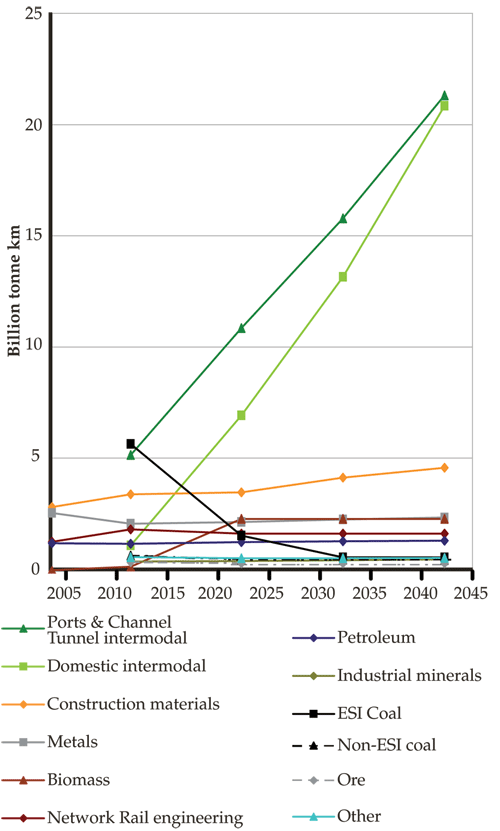
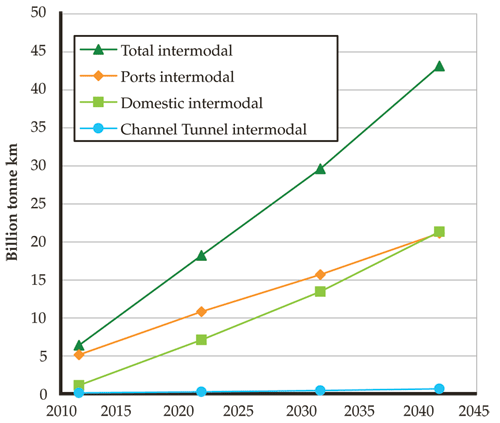
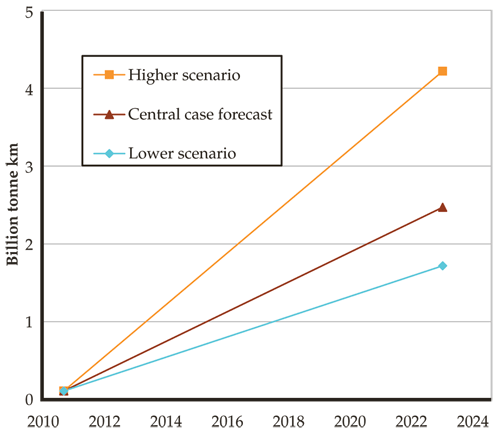
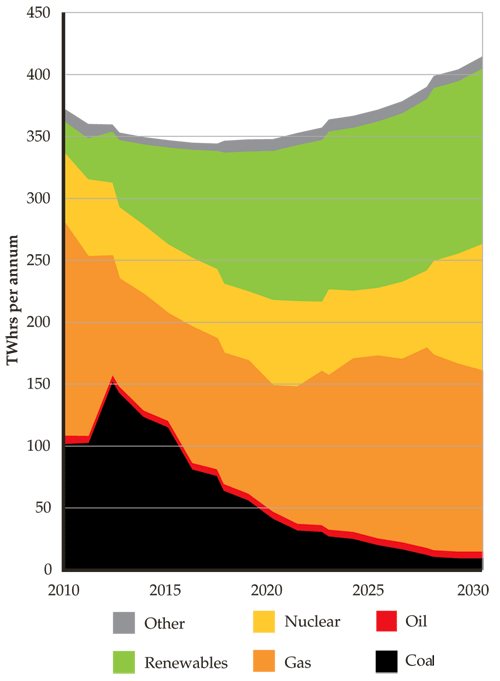
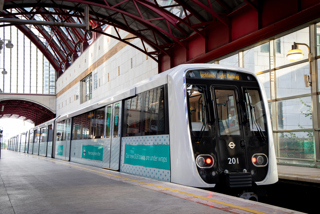
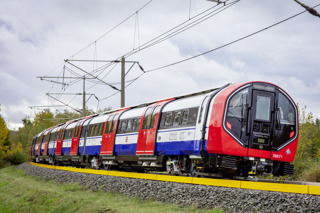

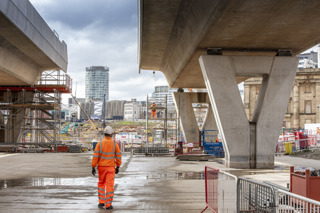
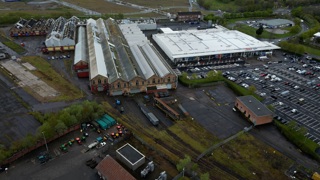



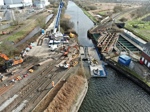







Login to comment
Comments
No comments have been made yet.